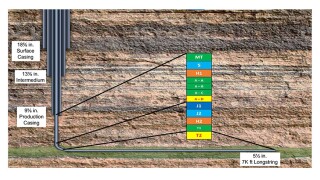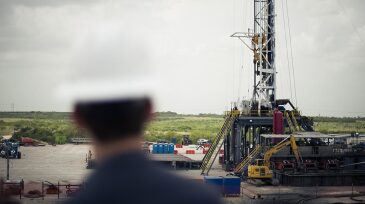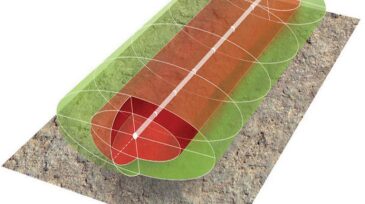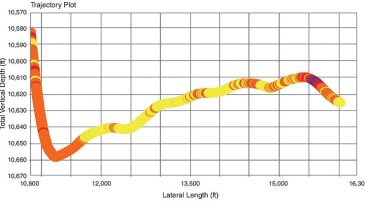Directional/complex wells
Extended-reach drilling (ERD) and complex wells have emerged as pivotal techniques, enabling access to previously unreachable reserves. ERD allows operators to access oil and gas reservoirs far from the drilling site, minimizing the environmental footprint and optimizing resource recovery.
This paper presents a continuous passive magnetic ranging technique that can provide real-time distance and direction to the offset well while drilling without interrupting drilling operations.
This paper highlights nontraditional methods to cure oil-based-mud losses in horizontal wells drilled in unconventional plays.
-
An analysis studied whether a well's toe could be affecting the production performance.
-
Although early inflow control devices and intelligent completions (ICs) were introduced almost 20 years ago, completion technology has not kept pace with advancements in drilling technology.
-
In the Eagle Ford, an integrated approach to engineering and operations was key to optimize performance and improve understanding of the area.
-
A number of companies are pushing for alternative approaches to offshore development that seek to access marginal reservoirs. Their differing and unique ideas call for a departure from the usual playbook, but share a common goal of slashing capital costs.
-
Larger-diameter coiled tubing recently has been used to perform millouts because of its improved set-down force and increased annular velocities for cleanout purposes. Service companies and operators have reduced the number of wiper trips when using larger-diameter CT, to save time and money.
-
Wellbore position is computed from survey measurements taken by a measurement-while-drilling (MWD) tool in the bottomhole assembly (BHA).
-
Saudi Aramco operates a large offshore oilfield development that has driven achievements in multilateral and extended-reach directional wells.
-
Eight of the world’s 10 longest wells have been drilled by ExxonMobil as operator of the Sakhalin-1 project in Russia.
-
The development of multilateral wells and long-reach wells has become important to maximizing recovery for many fields. These technologies are often applied in offshore environments, where large reservoir areas are drained from one or more platforms.
-
The force required to drill through a rock is a direct test of its strength and stiffness. Developing a reliable measure of the properties of rock based on the force required to drill a long lateral is a large challenge.













